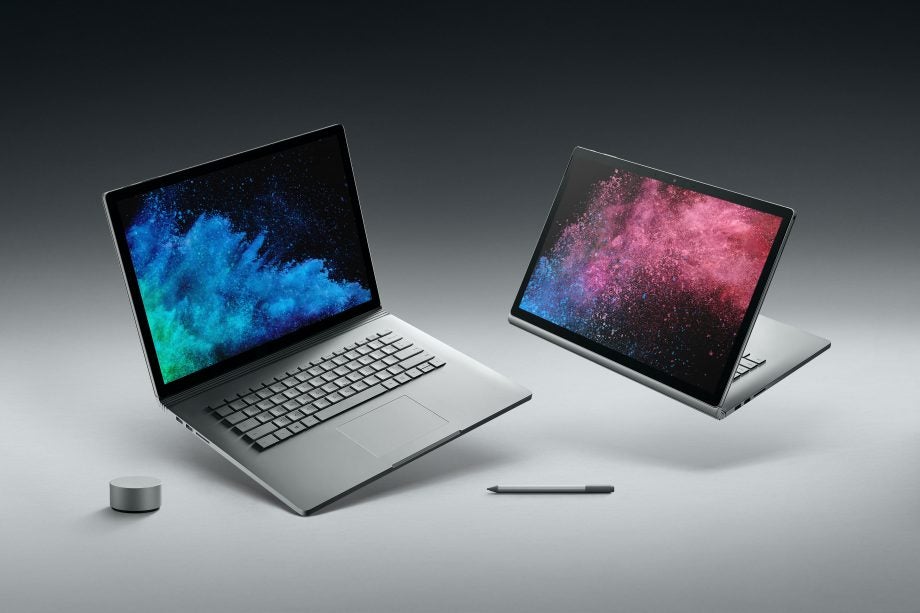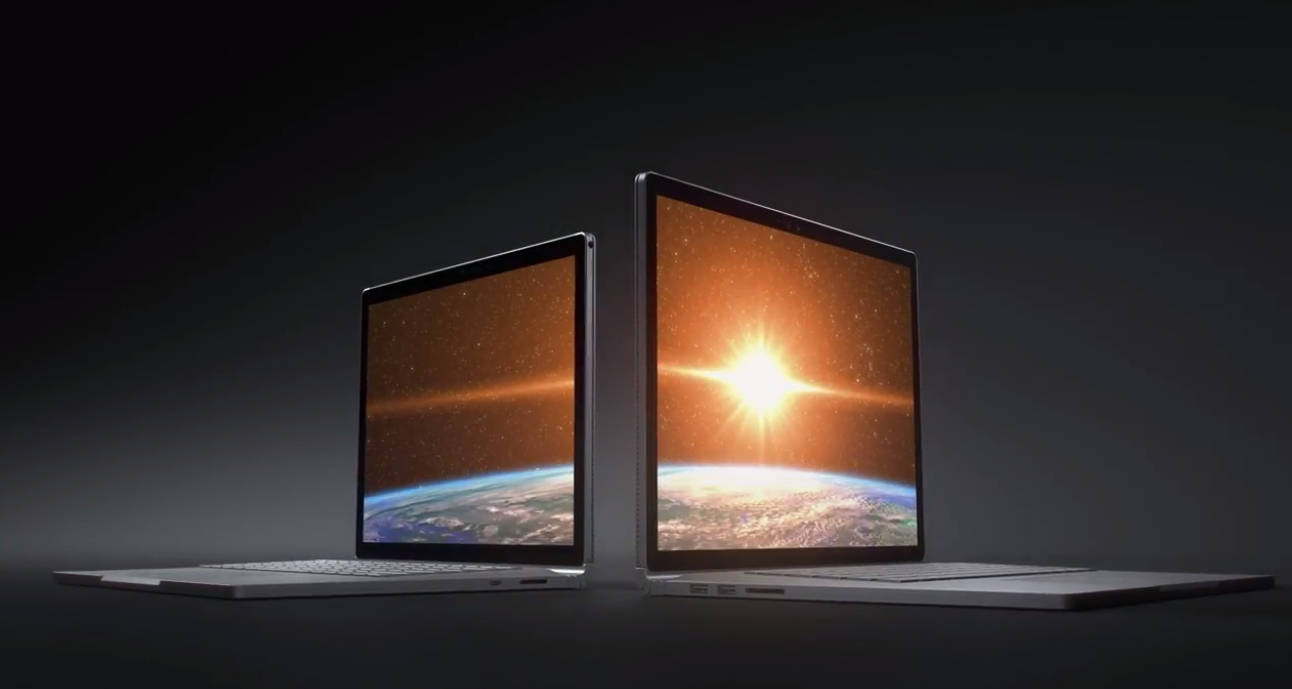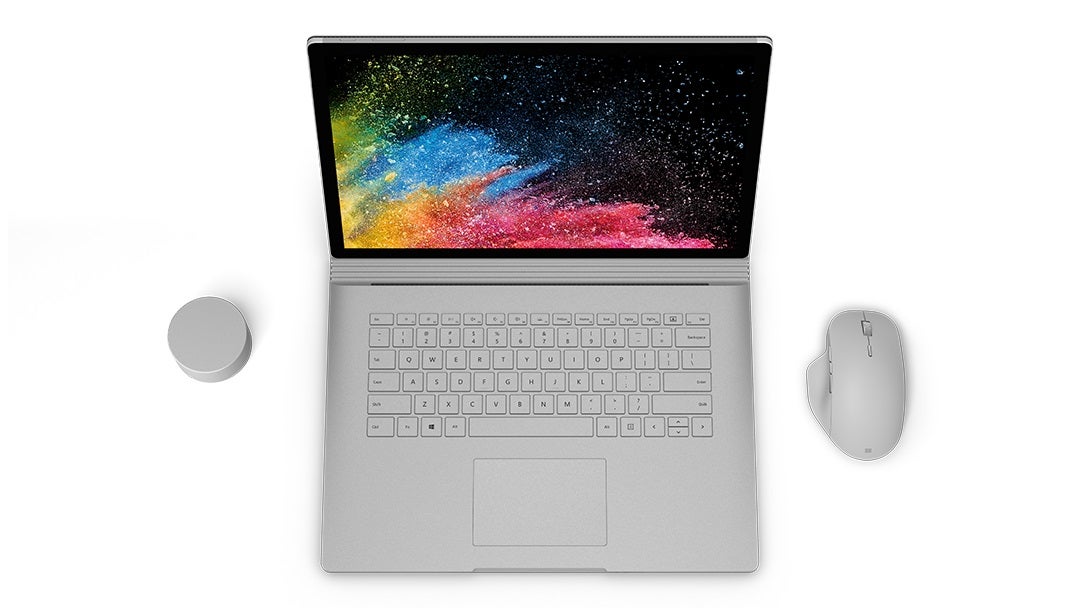Surface Book 2 vs Surface Book: What’s the difference?

Surface Laptop vs Surface Book: How does Microsoft’s refreshed 2-in-1 measure against the original Surface Book? Everything you need to know – including all the key specs – is right here.
Microsoft has taken the covers off its second-generation Surface Book 2-in-one hybrid, claiming it to be the most powerful Surface yet.
But is it a mere refresh? Or does it leave its predecessor in the dust? It’s time to pit the Surface Book 2 against the original Surface Book.
Surface Pro 2 vs Surface Pro – Design
You’ll have to look pretty hard to spot the difference between the new and old models of the Surface Book. The uncoiling “fulcrum” hinge has been tweaked to be stronger yet take up less internal space, while the keyboard deck has been give a nip and tuck to have cleaner lines. The space around the camera has also been fiddled with to present less visible cutouts of the screen’s surround, while the bezel has been slimmed down but not by a drastic amount.
The most interesting design tweak is barely noticeable and happens under the chassis, with re-designed cooling which allows the 13.5-inch Core i5 model to adopt fanless cooling. The quad-core 13.5-inch Core i7 model, and the 15-inch model which the Surface Book 2 do use fans due to greater thermal demands from the more powerful processors.

The display on the Surface Book 2 is unchanged from its predecessor as well, with the 13.5-inch model still sporting the PixelSense panel with a 3,000 x 2,000 resolution and 267 pixel-per-inch density. The larger 15-inch hybrid has a resolution of 3,240 x 2160 with a ppi of 260. Both models should deliver the sharp and contrast rich displays the PixelSense panels are known for.
Given the Surface Book had a rather pleasant, industrial aesthetic, sticking with it’s design for the Surface Book is is no bad move for Microsoft.
The only notable difference is the the port selection, which now includes a USB Type-C port alongside two USB 3.0 ports, a Surface Connect and SDXC port. And despite it being unfashionable in the smartphone world, the Surface Book 2 still has a 3.5mm headphone jack.
Related: Best laptops
Surface Book vs Surface Book 2 – Hardware and performance
Things get a little more interesting when we start to compare the innards of the Surface Book 2. Both the 13.5-inch and 15-inch models sport the latest Intel Core processors and top end versions have access to the Nvidia’s latest 10-series GeForce graphics chips.
The entry-level 13.5-inch Surface Pro 2 has Intel’s seventh-generation Kaby Lake dual-core i5-7300U clocked at 3.5Ghz and matched with 8GB of RAM, with 256GB of SSD storage. No dedicated GPU is available at the lowest spec, with Intel’s HD 620 taking care of graphics processing.
In comparison, the entry-level older Surface Pro with its sixth-generation Core i5 processor and Intel HD 520 graphics with 8GB of RAM, is a little bit dated but still offers decent performance given there has not been a major leap in performance for Intel chips of late.
Top-tier models of the 13.5-inch Surface Book 2 come with Intel’s eight-generation quad-core Core i7-8650U processor running up to 4.2GHz, 16GB of LPDDR3 RAM, and up to a 1TB SSD, with the option for a dedicated 2GB GeForce GTX 1050, which makes use of Nivida’s latest efficient Pascal architecture.
It’s here that the original top-spec Surface Pro starts to lose out to its younger sibling. While the Surface Pro has a Core i7 processor, 16GB of RAM and 1TB SSD, the processor and RAM are not of the latest standard (the i7 is dual-core in this case), and the 2GB Nvidia GeForce GTX 965M is based on architecture that can’t compete with the more modern GTX 1050.
And that gap widens further with the 15-inch Surface Book 2. Only three spec options are on offer for the 15-inch model, with the only the RAM and storage being configurable, running from 8GB to 16GB and 256GB to 1TB respectively.
Related: Windows 10 S laptops
 The real showpieces of the Surface Book 2 are its processor and GPU. Like its smaller sibling, it has Intel’s new quad-core Core i7-8650U also running at a nippy 4.2GHz when turbo boosted, and dedicated graphics comes in the form of a GeForce GTX 1060 with 6GB of GDDR5 memory. This chip is ready for AAA gaming and VR.
The real showpieces of the Surface Book 2 are its processor and GPU. Like its smaller sibling, it has Intel’s new quad-core Core i7-8650U also running at a nippy 4.2GHz when turbo boosted, and dedicated graphics comes in the form of a GeForce GTX 1060 with 6GB of GDDR5 memory. This chip is ready for AAA gaming and VR.
While the older Surface Book models were useful for general productivity and a bit of photo and video editing with a light gaming on the side, for the models with dedicated GPUs, the higher-end Surface Book 2 models, with their updated processors, look to be proper powerhouses.
The GTX 1050 in the higher-spec 13.5-inch model should offer decent performance and gaming at 1080p in modern games with the setting dialled down by a couple of notches.
While the 15-inch Surface Book 2 with its quad core chip and very capable GTX 1060 can be expected to make light work of video rendering and allow for gaming at 1080p and 60fps with a lot of settings dialled up to the max.
Meanwhile, the entry-level Surface Book 2 looks to be a solid upgrade over its predecessor, if not quite appearing to offer a night-and-day difference in specs.
Surface Book vs Surface Book 2 – price and release date
When the Surface Book made its UK debut early 2016, it was expensive for the specification it offered, with prices starting at a heavy £1449 for an entry level Core i5 model and topping out at a wallet-emptying £3149 for the top-spec Core i7 unit with the GTX 965M GPU.
As such, the Surface Book 2 was never going to be cheap. Available for pre-order November 9, the entry-level Surface Book 2 is around £50 more expensive than its predecessor, starting at £1,499. Go for a top-spec model and you’ll need to part with £2999, which is at least cheaper than the best model the older Surface Book could offer.
However, the really eye-watering prices are reserved for the 15-inch Surface Book 2. While there’s no word on a UK release date or pricing yet, the 15-inch model will start at $2,499 and will top out at a massive $3,299; we expect that currency conversion won’t help UK buyers here and that if the 15-inch model makes it over the pond, we’ll be looking at the same numbers only with a pound sign ahead of them.
Microsoft is claiming 17 hours of battery life from testing with continuous video playback with the Surface Book 2, an hour more than the 16 hours offered by the original Surface Book. This would seem ambitious for the models with the dedicated GPUs but we’ll have to reserve our speculation until we get our hands on a review unit.
Related: Surface Laptop vs Chromebook Pixel
Surface Book vs Surface Book 2 – Summary
At first glance, the Surface Book 2 looks like a decent refresh over its predecessor. But dig a little deeper and the specifications start start to look like proper upgrades.
Having the latest Intel dual- and quad-core processors should yield more power and energy efficiency over the older Surface Book, which while not likely to be particularly noticeable in everyday Windows 10 use, will be felt when throwing more intensive tasks at the chips.
Nvidia’s 10 series Pascal GPUs are also a major boon, as they can now offer performance akin to their desktop counter parts. When combined with a quad core chip, the Surface Book 2 is likely to have as much function as it does form, with the specs indicating it will make light work of video editing and gaming alike.
Given the Surface Book 2 is available for pre-order in less than a month, we’d recommend holding fire on the buying a Surface Book, and even if you are still keen on the first-generation machine, then the debut of its successor should see prices drop and potentially leading to some great Black Friday and Cyber Monday deals.
Is the Surface Book 2 is a worthy upgrade over its predecessor? Let us know on Twitter or Facebook.

